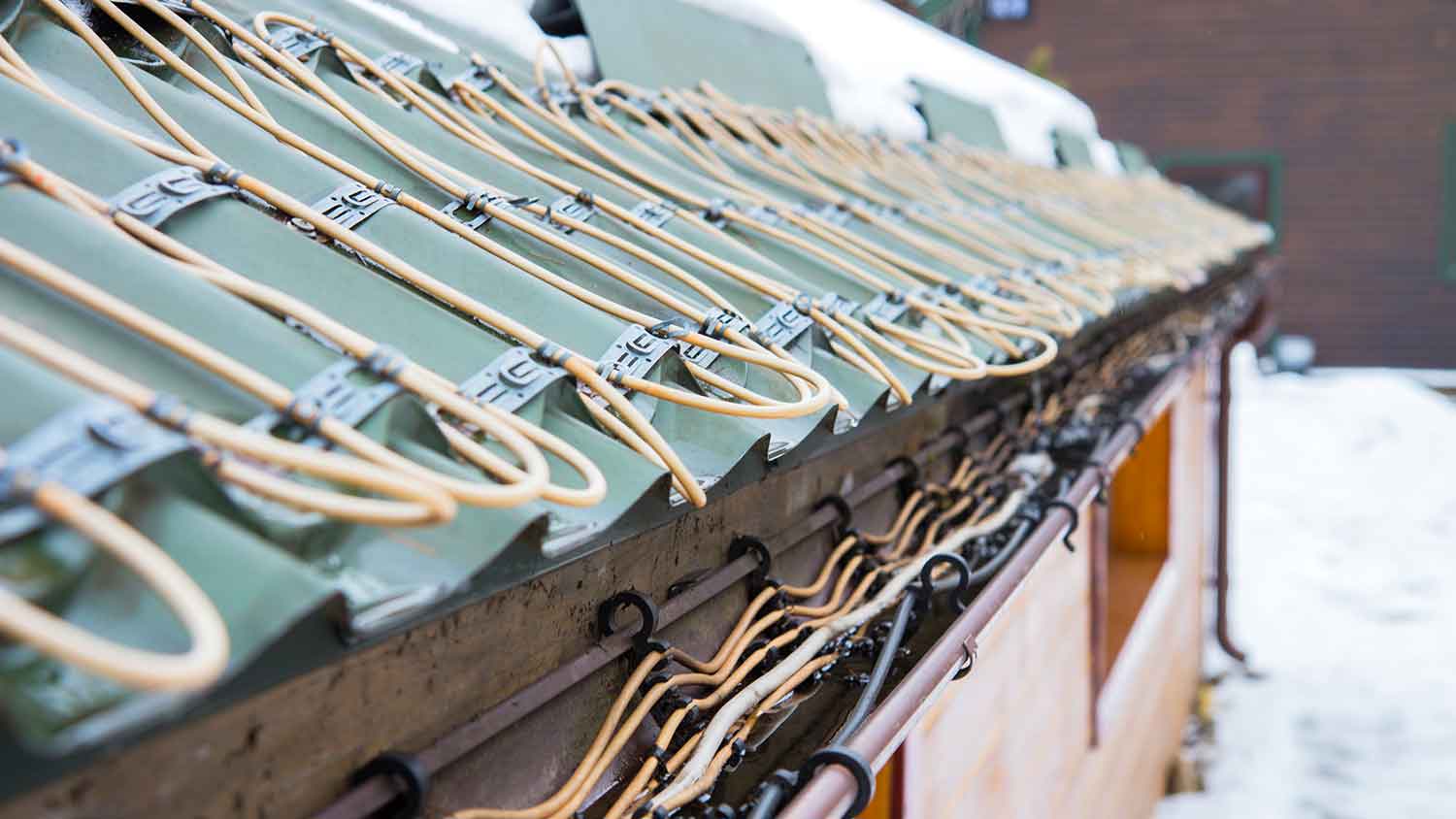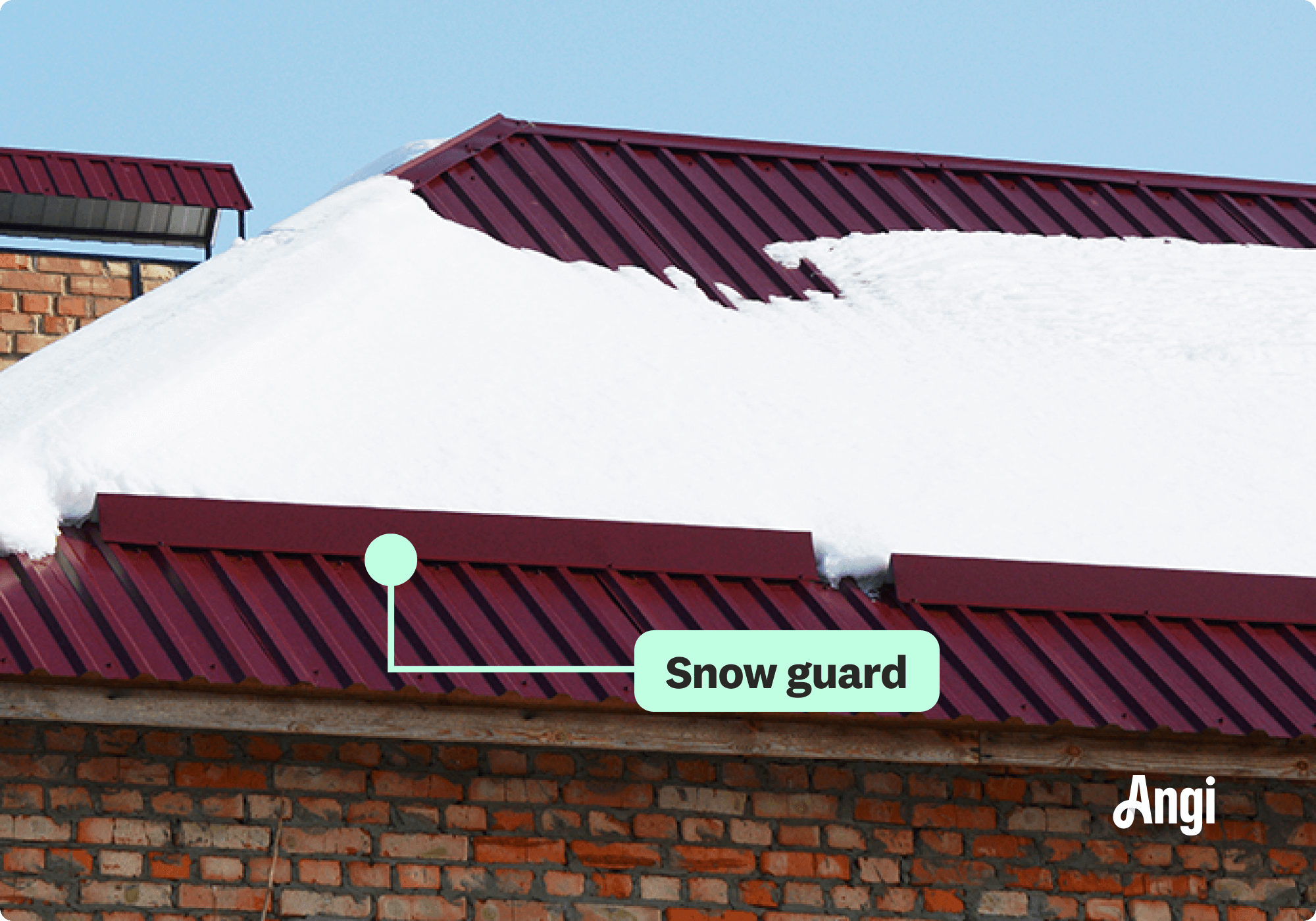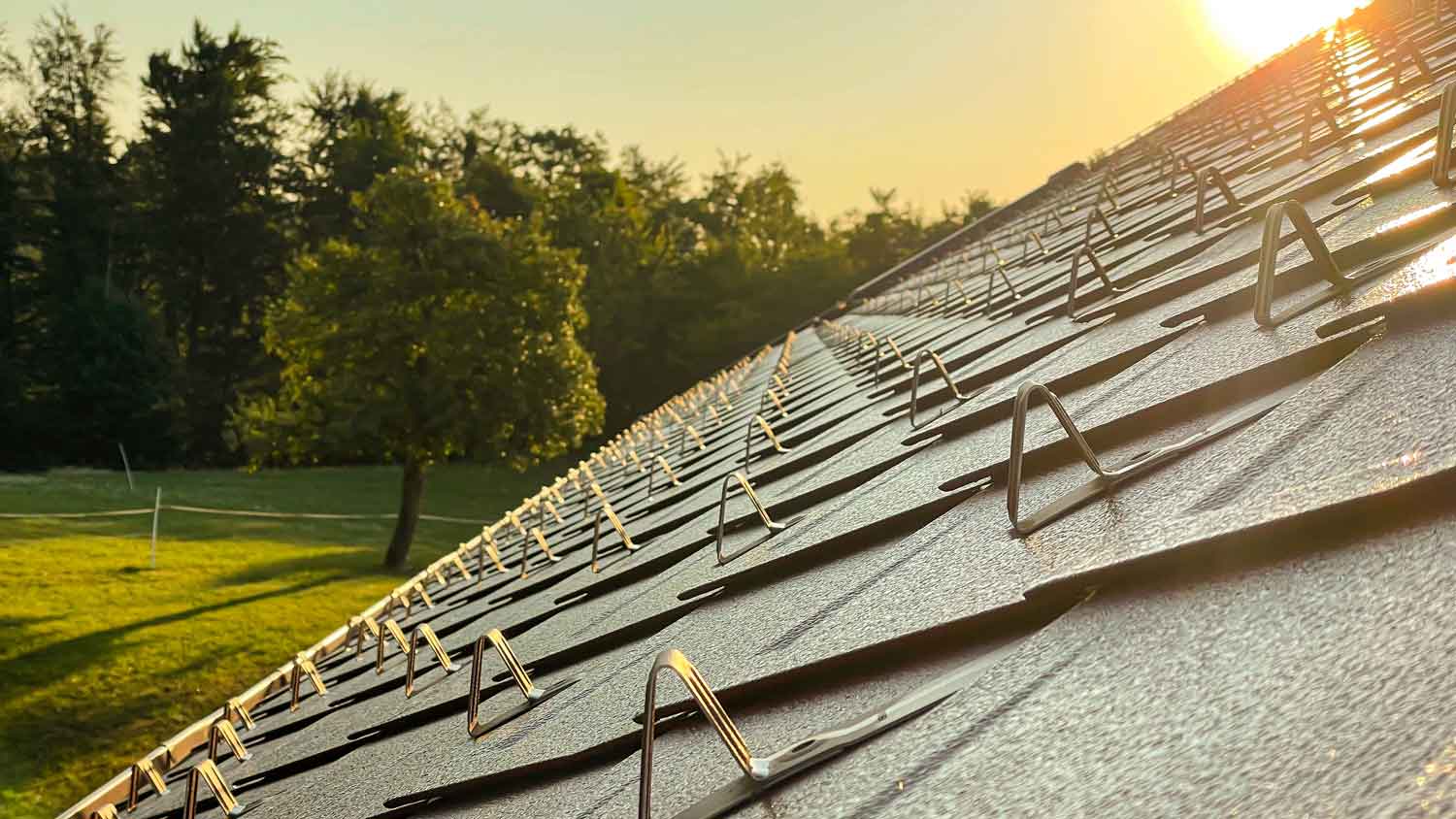
Discover the average roof heating cable installation cost, key price factors, and how to budget for your project. Learn how to save and what to expect.
Protect people and property from roof snow avalanches


Snow guards protect people and property from injury or damage.
Choose from continuous or discontinuous snow guard styles.
Consult a pro to determine the type of snow guard based on potential snow load.
Snow guards can match roof color for a less conspicuous look.
If you are reading this in Florida, then you probably clicked on the wrong article. But if you live in a northern area that sees a significant amount of snow each year, you are in the right place. When snow builds up, especially on a metal roof, it has a tendency to slide off the roof onto the ground below, creating a dangerous and damaging situation for anyone and anything that happens to be in its path. Luckily, snow guards can prevent injury and damage from snow avalanches and are an essential step in winterizing your roof. This brings us to what you need to know: What are snow guards, and do they belong on your house?

Snow guards are metal barriers that stop accumulated snow from sliding off a roof in large chunks. Snow that piles up on a roof can become very heavy as it thaws and refreezes and could cause injury and damage to property if it slides off unpredictably or all at once. Roof snow guards hold back the majority of the snow while allowing the melted snow to run underneath and drip off the roof into the gutters.
If you live in a snow-free area, the answer to this question is no. But in areas that see a lot of snowfall, snow accumulation on the roof and the possibility of it sliding off is a common winter roof issue. In that case, snow guards should definitely be a consideration. While they are common in areas that receive significant snowfall, they can also be helpful in areas that see any amount of snowfall, since they help to distribute the weight of the snow load and will still prevent mini avalanches from the roof.
Another consideration for whether or not you need to install snow guards is the type of roof you have. While snow guards can be installed on any type of roof, they are most commonly installed on metal roofs. Metal roofs are smooth and slick, so snow is more likely to slide off them as opposed to an asphalt shingle roof that is rough and provides some friction. Metal roof snow guards hold the snow on the roof, allowing it to melt gradually without fear that the entire snow load will crash to the ground.
As with any home improvement product, it’s important to consider the benefits and drawbacks of snow guards before you go ahead and invest in them. Here’s a look at the most relevant pros and cons of snow guards.
Protection for your home: There’s no denying that snow and ice can wreak havoc on your property. Snow guards can reduce the risk of damage, protecting your roof, gutters, landscaping, and other vulnerable parts of your home.
Various options available: Not all snow guards are created equal. You can choose from a variety of brands and options, making it easy to find one that meets your unique budget, needs, and preferences.
Improved drainage: Snow guards can melt snow and enhance drainage. This is important as proper drainage can ensure that water is diverted from your home and prevent issues like flooding or infiltration.
Potential warranty: Depending on the manufacturer and type of snow guard you choose, you may receive a warranty. With a warranty, you can enjoy some additional peace of mind.
Upfront costs: Snow guards can be expensive, even though they have the potential to save you money on home damages in the long run. The price you pay depends on the type and quality you choose as well as your roof size, roofing material, and the complexity of the installation.
High maintenance: Unfortunately, snow guards are not maintenance-free. To ensure they do their job and protect your home, you’ll need to inspect them on a regular basis for signs of wear and damage.
Installation challenges: It can be difficult and dangerous to install snow guards, especially if you’re not familiar with them. You may need to invest in a professional installation as it’s not always possible to DIY.
Effectiveness depends on climate: Snow guards are more effective in some parts of the country than others. For example, if you live in an area with mild winters, they may not be worth it.
"Metal roofing is extremely durable over the long term for protection against snow, ice, hail, and extreme weather too."
— Korey Gregory - Construction Supervisor at ASAP Restoration LLC

There are a few different types of snow guards that are categorized by being either continuous or unitized. Each type has the same end goal—to keep snow on the roof while it melts—but they achieve this goal in different ways. When you install snow guards on a metal roof, you will have to decide which type of snow retention system you want, which depends on the appearance, ease of installation, and strength needed.
Continuous snow guards use a long bar or tube to create a continuous guard along the length of the metal roof. There are two main types of continuous snow and ice guards for a metal roof.
A bar-style snow guard acts as a snow and ice guard for a metal roof. Its minimal, low-profile design makes it less noticeable than other types of snow guards. This style of snow guard typically needs only one row for adequate snow retention.
A fence snow guard uses tubes or pipes in a continuous run to prevent snow from sliding off the roof. It usually includes at least two tubes or pipes aligned vertically and is more noticeable than a bar-style snow guard. It may be able to withstand more pressure, so it is best used in areas with heavy snowfall.
Unitized snow guards are a discontinuous snow retention system that relies on snow to form a “bridge” between the individual guards. These can come in small or large profile units, depending on the needs of the roof, and they are installed in at least two rows in a staggered pattern.
Installing metal roof snow guards can help protect people and property from falling victim to a snow avalanche that may cause significant injuries and damage to property. Follow these tips before installing them on your roof.
Consult a professional to assess the vertical and vector snow loads to determine the best system of roof snow guards.
Choose a mechanically attached system—one that attaches with clamps or screws—rather than a system that just uses adhesives.
Plan the placement of the snow guards prior to installation.
Add two-by-fours under the roof and between the rafters in the location of the snow guards for reinforcement.
Choose a snow guard system that offers a variety of colors so you can match it with your metal roof.
Seal any roof penetrations from screws to avoid leaks.
Know how much snow a roof can hold and when to contact a roof cleaning professional near you to avoid cave-ins.
From average costs to expert advice, get all the answers you need to get your job done.

Discover the average roof heating cable installation cost, key price factors, and how to budget for your project. Learn how to save and what to expect.

Protect your home and roof this winter. Learn when and how to remove snow from your roof with these tips for using snow rakes, de-icer, and a simple rope.

Ice dams can cause serious damage to your roof and home. Learn what causes ice dams and steps you can take to prevent them.

An ice and water shield can protect your roof and save you the headache of premature roof replacement. Learn everything you must know about the shield.

Wondering how to prevent icicles on roofs? While you can't keep it from snowing, you can take steps to keep the icicles at bay. Find out how.

In areas that see heavy snowfall, understanding how to install snow guards on a metal roof is important for protecting people, property, and the roof itself.